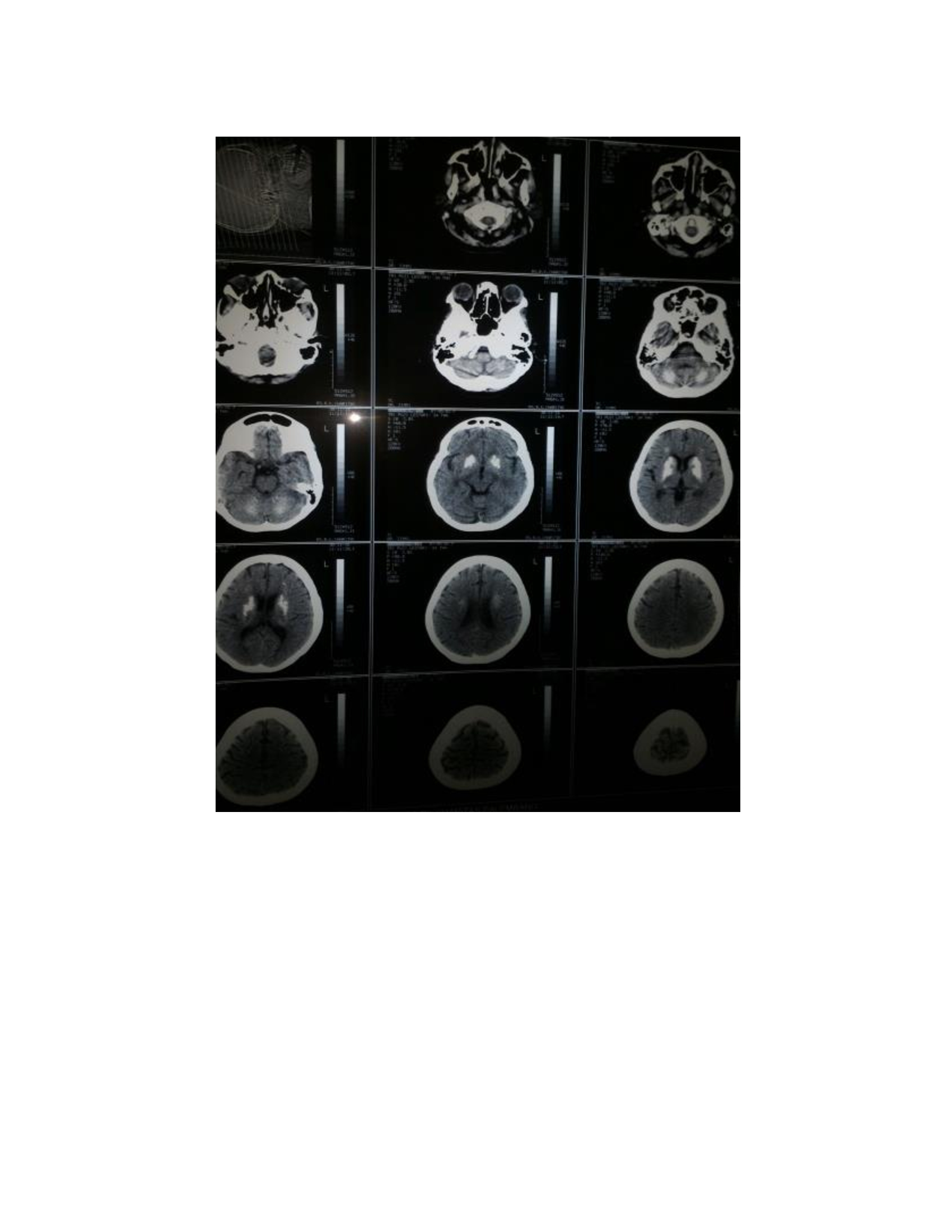Session Information
Date: Sunday, October 7, 2018
Session Title: Choreas (Non-Huntington's Disease)
Session Time: 1:45pm-3:15pm
Location: Hall 3FG
Objective: To report choreaathetosis as a clinical manifestation of Fahrs syndrome in Turner Syndrome patient
Background: The prevalence of fahr syndrme is 1/1000.000 people. Clinical manifestations are varies from extrapyramidal symptoms to neuropsychiatric symptoms such as memory disturbance, lack of attention, and movement disorders such as chorea.
Methods: Case report.
Results: The 35-year-old female patient was admitted to Neurology ward of Mohammad Hoesin Hospital for having abnormal movements since two weeks before admission. Patient experience abnormal movement continuously and uncontrolled on the body, both hands and both feet. Movements in the body such as spinning and twisting like dancing, fast, irregular, and finger movements such as twisting. The movement goes on and on, increases when anxious and disappears as the patient sleeps soundly. History of DM was known 2 months before and received insulin therapy, history of hypothyroid disease and received once-daily euthyrax therapy. There are history of body development disorder and never menstruated. This complain also experienced 2 months before and improved after eating haloperidol and trihexyphenidyl. On general physical examination, body weight was 40 kg and height was 135 cm. There is no sign of secondary sex growth, such as the absence of hair in the axillary and pubic areas, and undeveloped breasts. There is an abnormal movement of choreathetosis in neurological examination. We performed Head CT Scan and obtained a result of heavy calcification of right and left corona radiata, right and left basal ganglia, right and left caudate, right and left cerebellum, as shown (figure 1). On laboratory examination we obtained the blood glucose at 278 mg/dl, thyroid function TSH 6500, and FT4 1,4. The results of ultrasound examination obtained a small uterus (hypoplasia) with size of 3.33 cm, endometrial like 0.09 cm and both non-visual ovaries, with the impression of uterine hypoplasia and nonvisual bilateral ovarii. During hospitalization, patient received haloperidol 1,5mg three times daily; Trihexyphenidyl 2mg three times daily, Clonazepam 1mg twice, insulin therapy, euthyrax 50 mcg once daily, and augmentin twice daily. On genetic examination we obtained XO chromosome as a result. In outpatient setting, the patient showed good response with neuroleptic therapy without the administration of augmentin.
Conclusions: It is important to consider Fahr syndrome as one of differential diagnosis in patients with choreaathetosis.
References: Manyam BV. Et al . Bilateral striopallidodentate calcinosis: clinical characteristic of patients seen in a registry. MovDisord.2001 March; 16/2:258-64. http://www.ncbi.nlm.nih.gov/pubmed/1129577. Saleem S.et al. Fahr’syndrome: literature review of curret evidence. Orphanet Journal of Rare Diseaase. 2013,8:156. http://www.ojdr.com/content/8/1/156.
To cite this abstract in AMA style:
S. Marisdina, M. Mukhlisa, K. Merryn. Choreaathetosis as clinical manifestation of Fahr Syndrome inTurner Syndrome Patient [abstract]. Mov Disord. 2018; 33 (suppl 2). https://www.mdsabstracts.org/abstract/choreaathetosis-as-clinical-manifestation-of-fahr-syndrome-inturner-syndrome-patient/. Accessed April 20, 2025.« Back to 2018 International Congress
MDS Abstracts - https://www.mdsabstracts.org/abstract/choreaathetosis-as-clinical-manifestation-of-fahr-syndrome-inturner-syndrome-patient/

